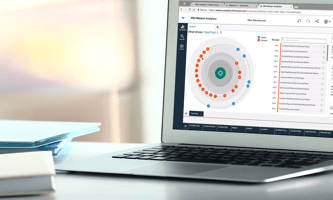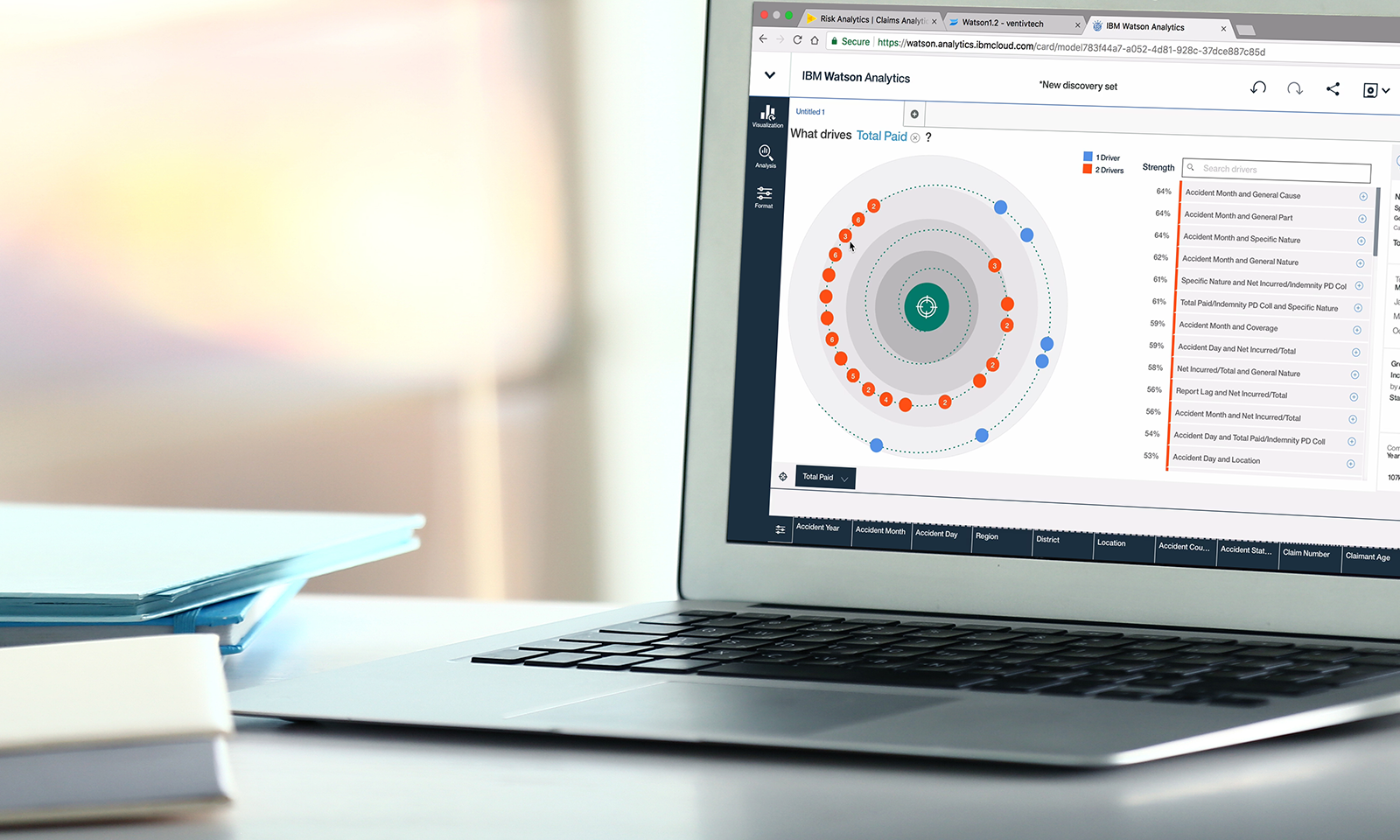 Data is everywhere, and technology has given risk managers the tools to work with it directly, finding the answers they need to drive their businesses forward.
Data is everywhere, and technology has given risk managers the tools to work with it directly, finding the answers they need to drive their businesses forward.
Data and analytics have always been the language of insurance.
“Go back to the early days of Lloyd’s, when underwriters of the day met in coffee houses to share their experiences around which ships successfully made it to port. That’s how marine insurance began—with people pooling information and using it to inform business decisions,” said Rob Hoyt, Department Head and Professor of Risk Management and Insurance in the Terry College of Business at the University of Georgia.
But as the insurance industry became more formalized, actuarial science emerged as a way to institutionalize the process of collecting data and applying it to the practice of evaluating and pricing risk. As data analytics fueled the growth and sophistication of the insurance and risk management industry, it also grew increasingly siloed to a subset of specialists.
Actuaries and data scientists became the experts at drawing in concepts from mathematics and applying them to analyze and measure risk. Within an organization, there are typically a select few experts or service providers who are responsible for the data.
 |
Prof. Robert Hoyt
University of Georgia |
But all of that is changing.
New technologies are lifting the veil shrouding data analytics and making it more accessible to the end user—risk managers and business practitioners with the decision-making power to apply analytical findings to implement operational changes.
“As computing power and the pervasiveness of data increase exponentially, the walls between data professionals and risk management professionals have broken down,” Hoyt said. “As a result, it’s critical that a broader set of individuals in risk management understand the fundamentals of data analytics.”
User-Friendly Tools Enable Risk Professionals to Answer Critical Business Questions
Risk managers have an opportunity to provide enterprise-level value by spending less time collecting information and more time finding answers.
And this is what CEOs and Boards are looking for. More than ever, they need someone who can work with data quickly and operationalize their findings. Risk managers are in a prime position to fill that role and enhance their value within their organizations, while driving the business forward.
The approach to data analysis has become more agile, self-service and intuitive. Advancements in technology have helped us produce analytical tools that let the business practitioner do the data exploration themselves.
Artificial intelligence and the ability to use natural language to explore data, for example, allows lay people to ask critical business questions and find the answers themselves.
At Ventiv, we partnered with IBM to implement Watson Analytics. It’s just like asking a question of Google or Siri. Instead of figuring out how to get access to data, explore it, and get questions answered, risk managers are empowered to jump in and query their data directly and generate automated predictive analytics without the need to engage a professional data scientist.
Dr. Hoyt has already seen some health care risk managers take advantage of AI-driven analytical tools to identify the root of their exposures. Hospital staff and administrators already know that patient falls are a top risk – but do they know enough about those falls to prevent them from happening in the first place? Natural language querying makes it easier for risk managers to probe their history and look for common threads.
“Now, they can identify the common characteristics of patients most likely to fall, which serves as a starting point for targeted prevention efforts,” Hoyt said. “It’s an example of making data actionable in a clear business context.”
Modern analytical tools also allow risk managers to integrate third party data to gain a more holistic view of their exposure. Examining external parameters like weather patterns, census records or building materials against an organization’s loss experience and claims data can illuminate links that inform a new risk mitigation approach.
Comparing building materials and climate conditions to property losses, for example, can help determine if certain locations are more susceptible to mold. If you can see that the building is in a high-moisture region, you can go back to the building materials and cleaning protocols and find new ways to prevent and mitigate mold damage.
Predictive analytics, also enabled by third party data integration, increasingly play a role in business decisions as well.
“Large consumer retailers have used predictive analytics around weather data to reroute inventory where they expect a spike in demand. If one of their locations is in the path of a hurricane, they can send more water and other practical supplies their way,” Hoyt said. “They harness the power of analytics to satisfy a customer that hasn’t even emerged yet.”
An abundance of data and intuitive modeling tools allow risk managers to drive these strategic decisions and enable true enterprise risk management across their organizations.
Risks of User Error
Despite the user-friendly nature of modern analytical tools, they can create more risk for an organization if that user lacks basic understanding of data science. Risk managers and other business leaders still have to ask the right questions and understand how to interpret those results.
Introducing bias is one risk. Leading or narrow questions may produce the results that a risk manager wants to see, but they may not be accurate if they are not comprehensive. Misinterpreting the answers can also undermine data’s usefulness.
“There’s an interesting statistic that the interest rate in the U.S. is positively correlated with the height of the Fed chair. So rates were really high when Paul Volcker was the chair at 6’7”, but dropped way down when Janet Yellen took over,” Hoyt said. “Of course, the Fed chair’s height isn’t driving interest rates, but it’s a simple example of how critical it is to separate correlation from causation. Without that distinction, results are skewed and meaningless.”
A Partner with Data and Domain Expertise
The opportunity for risk managers to take a leading role in data analysis is clear, but doing it well remains a challenge. There are two ways to better equip themselves: education and partnering with expert vendors.
Practicing risk managers can take their pick of educational options, ranging from hour-long webinars all the way up to professional designation courses and master’s programs in data analytics.
“At the University of Georgia, we made curriculum changes to ensure every undergraduate in the college of business understands how to use data to ask business questions,” Hoyt said. “We also added a Master’s in Business Analytics degree program that can serve risk managers already well into their careers.”
As a graduate of UGA’s risk management program myself, and a technology employer, I can testify that recruiters increasingly want new hires to come with this education and experience already under their belts.
Those are the kind of graduates that we at Ventiv are interested in hiring because they are prepared to meet the demands of the data and analytical needs, but they also have domain knowledge of risk management and insurance terminology.
To fill in the gaps and ensure data is handled and interpreted correctly, though, practicing risk managers need a vendor who also comes equipped with both data and domain expertise.
You would want to partner with a technology provider like Ventiv that knows your industry and knows how to empower you to make data-driven decisions that generate optimal outcomes like reducing claim frequency and severity. At Ventiv, we also understand the regulatory and reporting requirements around insurance.
And, of course, you would want to select the risk management software system with the best analytics, reporting, and data-discovery tools for your needs. As the first and only provider in our sector of the risk technology market to offer Watson Analytics as an embedded, fully integrated component of our software solution, we think Ventiv is the obvious choice. That’s because with Watson Analytics, Ventiv has reimagined what risk management analytics software and risk management reporting software can do for the risk, claims, and safety profession.
This article was originally published in Risk & Insurance.
Kristi McFarlin is Ventiv Technology's vice president of analytics. Contact Kristi at kristi.mcfarlin@ventivtech.com.








 Data is everywhere, and technology has given risk managers the tools to work with it directly, finding the answers they need to drive their businesses forward.
Data is everywhere, and technology has given risk managers the tools to work with it directly, finding the answers they need to drive their businesses forward.




